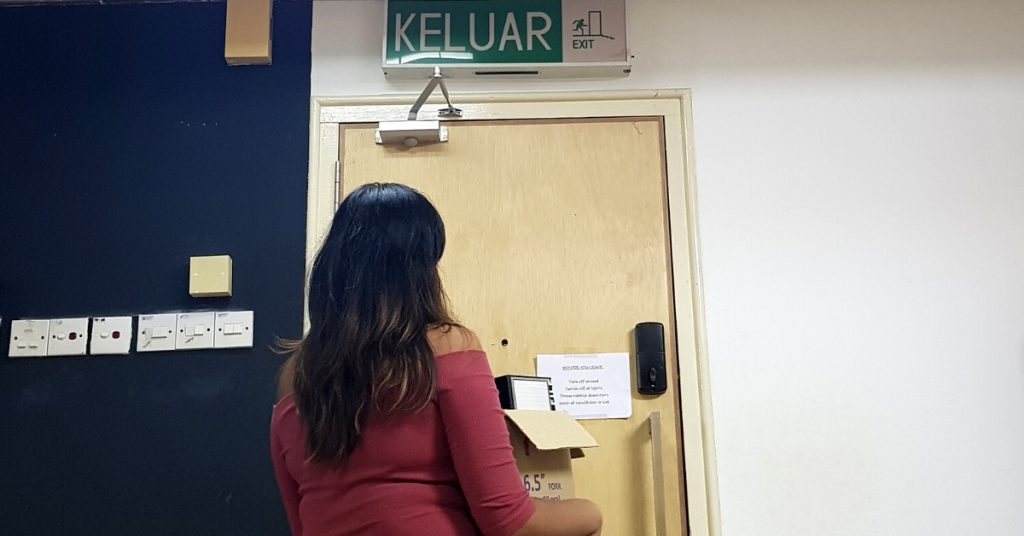If both salary and work-life balance were to be removed from the equation, what else would drive you to stay with your job?
According to a recent study by Qualtrics, Malaysians rack up a percentage of 54% on average in terms of employee engagement. This makes us a country with the 7th most engaged employees in the world.
In this context, Qualtrics—the firm that conducted this survey—defines an engaged employee as the ability of a person to go above and beyond what’s expected of them in the workplace.
This includes an emotional connection to the company, intent to stay, and dedication to the workload.
So with Malaysia being a little higher on the list, it appears that we should have no trouble staying with our employers for a while, right?
Not quite.
Engaged Employees Might Not Equal Ones That Will Stay
Despite our score that’s slightly higher than the global average of 53%, Qualtrics found that 30% of Malaysians still intend to leave their jobs in 2 years.
Adding on to that, 16% of Malaysians are prepared to quit their job in less than a year.
At first glance, the study seems pretty contradictory. If Malaysian employees seem relatively engaged, why do the other numbers still tell us that they plan to leave their companies just a year or two later?
When you factor in the fact that the millennial workforce is constantly growing, it’s easy to point the finger of blame towards their job-hopping tendencies.
But there are real reasons behind why they might do it, some of which could be as plain and simple as: the lack of a proper feedback system and inability to voice concerns or issues at work.
If those situations are not properly addressed, it doesn’t really matter how engaged and bright-eyed of an employee you are, you’re probably on the fast track to a quick burn out and subsequent resignation.

Qualtrics listed out resources, an effective employer, recognition, and a good sense of the bigger picture as the main reasons for an employee staying.
Do you see the common denominator?
Problems can understandably rise at any time, that’s nothing new. But what really matters is having open, healthy feedback about it, and then having that feedback acted upon.
Communication also shouldn’t be something that’s limited to ‘as and when’—but rather something that’s necessary to do on a frequent basis.
Trying To Reduce Churn Rate With Tech
To be fair, there are many employers and companies out there who are doing their best to cultivate a better working environment.
And no, we’re not just referring to regular weekly scrums or meetings.
Gamified employee engagement (or sometimes just referred to as ‘HR’) apps are increasing in popularity. These let employees keep a little diary of their achievements, be a part of the company’s bigger picture, and even exchange feedback with their superiors in a less daunting manner.
Employers can then monitor employee performance on the app, provide acknowledgement of their contributions, and dish out rewards where they see fit.

Overall, these apps are here to provide employees with a sense of motivation in the workplace, which should, in turn, boost productivity levels.
Some gamified employee engagement apps already being used by Malaysian companies are Feet’s, SelfDrvn, and TraitQuest.
Other honourable mentions include Vimigo (not yet publicly launched at the time of writing) and Gameka (which provides gaming solutions for driving employee engagement instead of a specific app interface).
It goes without saying that there are a lot more of these apps out there, but apart from Vimigo, these were the few that we found were commonly used in Malaysia.
However, as Pete Jenkins of GAMIFICATION+ told us in a past interview, gamification is not a be all end all solution to all your HR problems.
I believe that it should be the duty of HR managers and other senior executives (that lead a team) to see if such an app is within their capacity to manage in the first place.
While I agree that tech and gamification apps could cultivate a stronger bond amongst colleagues in a team…
Nothing Beats The Traditional Face-To-Face
When it comes to problem-solving and communicating with management especially, I would honestly prefer it to be done face-to-face.
Of course, timing is also essential for an ideal face-to-face discussion. Instead of waiting for a problem to reach its boiling point, it needs to be addressed the very minute you start to struggle.

It also helps if you are able to pinpoint the cause of your troubles so that your employers don’t think you’re simply another disgruntled employee with a tendency to complain.
Is there too much being put on your plate without the right training or resources? Is micromanagement killing your freedom and ability to perform?
Or maybe you just think there’s a better way for you to gain insight into your company’s bigger picture so that your work moves in that direction.
Being able to first identify the potential obstacles in your way would reflect greatly on your skills as a driven, dedicated and honest employee—something that I’m sure would not go unnoticed.
So, while gamified employee engagement apps have the right idea about encouraging feedback on a more frequent basis, I believe that proper results can only come from a true in-person discussion.
- You can read other opinion pieces we’ve written about here.
Featured Image Credit: Vulcan Post











